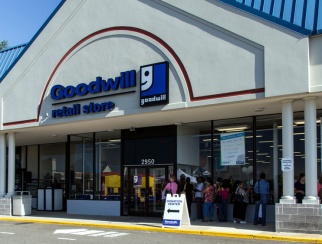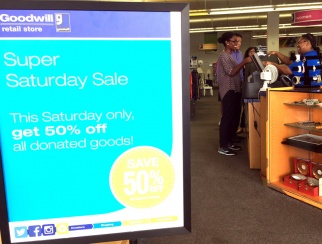This article was published in the September 2016 issue of STORES Magazine.
A business is only as good as the sum of its parts, and all of those parts are inextricably intertwined. The more performance data on each component, the easier it is to fine tune the business model and increase efficiency and profitability.
The need for accurate data delivered in a timely fashion is especially critical in the retail sector. Take advertising: John Wanamaker, the venerable 19th-century Philadelphia retailer considered to be a pioneer in marketing, said, “Half the money I spend on advertising is wasted — the trouble is, I don’t know which half.”
Measuring advertising effectiveness has always been a challenge, and with new avenues online and in social media it is even more complicated. For multiple-location bricks-and-mortar retailers, a promotion may go gangbusters in one store but not so well in others. While overall it may seem to be a success, the effect may be stealing other sales or diluting sales of higher margin products.
It is all about asking the right questions and getting legitimate answers.

Analyzing sales
Those types of answers were exactly what Goodwill of Greater Washington (D.C.) was looking for in order to run and promote the nonprofit’s 16 outlets.
In addition to retail stores and online shopping options, Goodwill of Greater Washington offers custodial services, pest control, grounds maintenance operations and educational and workforce training for unemployed, disadvantaged and disabled people. It generates revenue through individual, foundation and corporate giving and the sale of donated merchandise.
With three major concerns the organization wanted addressed, Goodwill turned to Applied Predictive Technologies for assistance. APT is a cloud-based analytics software company that measures cause-and-effect relationships of programs and their outcomes. Its “Test and Learn” software identifies and analyzes which client programs work best, where and when they work best and how they can be improved going forward.
APT also offers products that support decision making for specific business needs including transaction analysis, space planning, promotion design, category management and location selection; the company provided its services to Goodwill on a pro bono basis in an effort to give back to the community.

Customers attending Goodwill’s “Super Saturday” sale were only purchasing the promoted discounted items.
The first area of inspection was Goodwill’s monthly “Super Saturday” sale, which features discounts on all pre-owned merchandise. Goodwill wanted to determine the impact the promotion had on subsequent sales of non-discounted products, and if or how it affected customer buying patterns and loyalty.
“We spend a lot of effort on our supply chain system and, like a lot of retailers, we try new and creative ways to serve our customers,” says Brendan Hurley, chief marketing officer for Goodwill of Greater Washington. “We needed to know if the event was cannibalizing our sales and how it affected our bottom line.”
“We wanted to analyze the Super Saturday sales to determine what sales would have been without it and what were the incremental sales because of the promotion,” says APT Senior Vice President Sarah Hinkfuss Zampardo. The companies also wanted to determine the relationship between those transactions and those made “at other days and times with other items.”
To establish a baseline, APT ran a test where certain stores did not participate in the promotion and found that, on average, Super Saturday had a positive impact on sales and transactions on that day and drove traffic to the Goodwill outlets. On the flip side, it shifted purchases away from the other days of the week, which diluted the overall effect of the promotion.
The test discovered that customers attending the sale were only purchasing the promoted discounted items; they were not browsing the store and purchasing additional merchandise at full price. The event did not generate significant overall long-term sales or revenues, so Goodwill and APT came up with a different cross-selling philosophy to encourage customers to purchase other products in the same trip.
“We learned that when we advertised, some sales were generated before and after the event,” Hurley says, but found that many customers were foregoing other store visits when they “can come in and save 50 percent on a Saturday.”
As a result, Goodwill has “reduced the length of our marketing campaigns to minimize any cannibalization on the days leading into each sale, which has been working,” he says. “We increased the number of retail associates working the floor and increased production staff levels to push more merchandise to the floor. Greater volume equals greater selection.”
Identifying opportunities
Goodwill also wanted to analyze its donor base to target high-potential demographics, identify opportunities to increase donations and determine the best route for donor outreach.
Certain types of marketing activities, such as special events, resulted in the highest number of repeat donations.
APT and Goodwill discovered that many first-time donors did not donate the year after their initial gift. They also determined that the highest-value donors, 2 percent of contributors, accounted for 30-50 percent of all donations. The analysis showed that certain types of marketing activities, such as special events, resulted in the highest number of repeat donations.
“It’s great to see mission-based organizations benefit from stronger data analysis capabilities in order to make reliable and accurate decisions,” Zampardo says. “By giving more nonprofits access to data-driven insights, we can allow these organizations to make a broader, more positive impact on the areas they serve.”
Goodwill also wanted insight into its free workforce development programs for unemployed, disabled and disadvantaged persons, and how best to tailor efforts to increase enrollment, provide maximum benefit for participants and expand their footprints in communities.
APT identified the characteristics of regions that correlated with an increased need for workforce development, including income, education and other factors, which allowed creation of a map application to visualize unmet job training needs geographically. As more information about participants is gathered, the map can be modified to keep up with changing circumstances and demands.
“We just launched our first fully integrated, multichannel recruitment campaign that targets the geographic pockets of ‘underemployed’ residents around our Arlington (Va.) Career Center rather than the ‘unemployed,’” Hurley says.
“The messaging is also designed to appeal to the underemployed, and the website has been redesigned to make the online application process more intuitive for the user. While the campaign is still underway, the initial results are very encouraging.”
“I was very excited by the breadth of deep insights that the data dive teams were able to provide Goodwill across multiple key parts of their business,” Zampardo says. “We were all inspired by the team at Goodwill and their incredible dedication to the organization’s mission.”